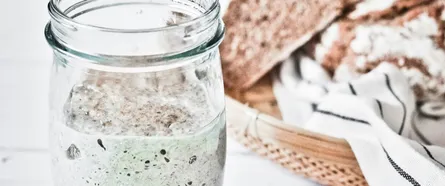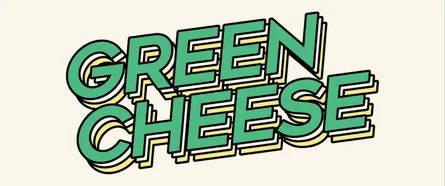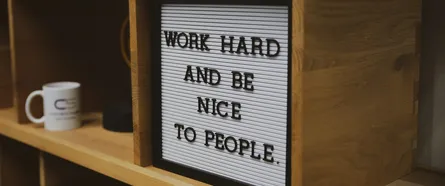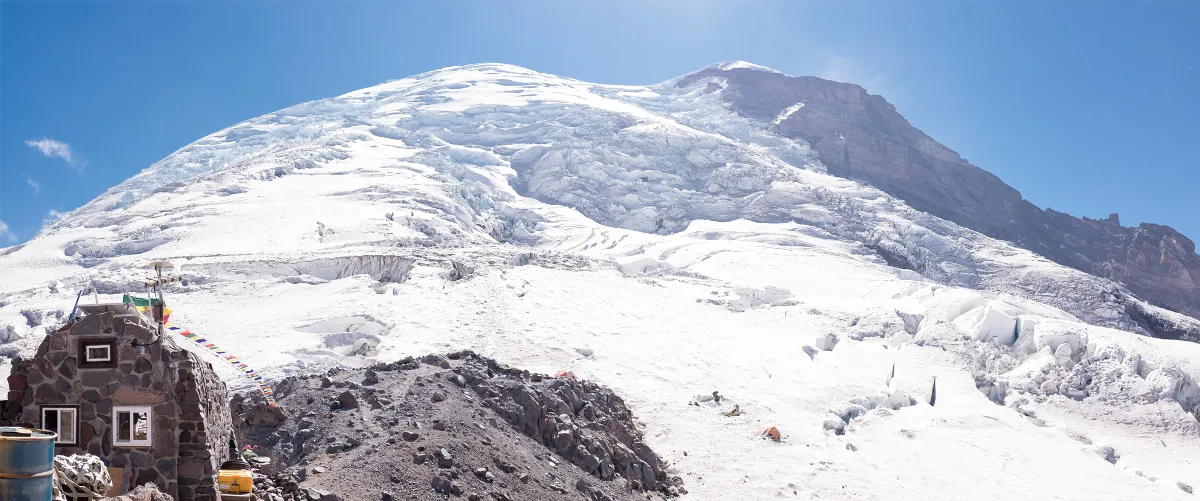
What Climbing Mt. Rainier Taught Me About Setting Goals
- Eric Kraus
- personal
- Dec 31, 2015
Introduction
In August, I had the opportunity to step foot on the 5th largest peak in the contiguous United States. How would I describe it? Epic.
Mt. Rainier is not only a moderately difficult, technical climb - it is used as a training mountain for higher peaks of the Himalayas. Those who have reached the summit will tell you, it is both physically and mentally enduring.
So, what grand lessons did I learn from this adventure? Many.
The most analogous were those to my personal life and career, specifically around goal setting .
Preparation
It is usually necessary to do some type of homework before you set a serious goal. This helps prepare the mind AND body.
Mental Preparation
Often over-looked for physical type goals like this. I spent a lot of time mentally preparing.
It’s important to answer all the usual questions: what, where, when and why?
For example:
- What are you trying to accomplish, specifically. I mean, specifically.
- Where will you work on this goal and when?
- Why is this important to you?
I believe the answer to ‘why?’ is the best indicator of the possibility of success.
A clear, personal motivation will carry you a long way - but not all the way .
Thoughtful, upfront planning and strong willpower will make the difference between success and something that fades out over time.

I also spent a lot of time watching videos on YouTube. Some might poo-poo this…but for the specific purposes of knowing
- what the demands might be
- what the experience could be
This didn’t detract from the experience of being there. It helped enforce and prepare me mentally.
See section: Don’t Let Your Mind Play Tricks On You
Physical Preparation
To prepare physically, I read a lot about training programs others did before their climbs. I knew it would be physically demanding.
Here are some of the things I did:
- I Ran - A LOT
- Daily training/running routine
- Chicago Half Marathon
- Medtronic (Minneapolis) Full Marathon
- Climbed skyscraper stair
- Dabbled with Oxygen-training masks
In hindsight, I didn’t do nearly enough leg endurance training.
Hire An Expert Who Has Done It Before
Hiring an expert seems obvious when talking about climbing a mountain, but it applies for many personal-life and work goals too.
I decided to climb Mt. Rainier with a guide… and not just one. We had four guides for the eight climbers in our group. Having experienced guides was critical to the success of the team that eventually reached the summit.

Guides are Coaches
If you want to be successful, find someone else that has done it before you. Or even better, find someone that does it frequently.
This might be a public speaker, personal trainer or a former smoker. Or, maybe someone that knows how to tie a good knot.
Anyone that has walked the path before you will be a great mentor and coach to help you reach your own goals. A coach also has the ability to look out ahead, and help you navigate difficult corners.
Don’t Set Out to Climb The Entire Mountain
This was my mantra through my training and the actual climb itself.
“I just need to climb for one more hour!”
Some goals are just too big and daunting to take on in one effort. For this summit goal, focusing on a smaller goal was much easier, and more mentally achievable, than worry about if I could make a climb for fourteen hours?!?!

Breaks Are Required
During the ascent, we climbed for 1 hour and then rested for 10 minutes. Climbed 1 hour, then rest 10 minutes. … for 14 hours .
A climb/break cycle was, in many ways, very similar to the real-world:
- A break usually consisted of 10-15 minutes of relaxing, hydrating, eating, socializing, and taking photos. And strangely, and increasingly difficult time breathing (i.e. getting enough Oxygen)
- Ironically, the first ~10 minutes after a break was quite difficult. You’ve just come off a rest, and your heart rate has slowed. The brain is getting less Oxygen at altitude. Sort of like, sluggish return to work after a break… or waking up from a mid-day nap.
- The middle 20-25 minutes improved drastically. Here, blood is flowing again, and the team was getting into a steady groove.
- Usually, after ~45-50 minutes of a climb segment, everyone was ready for a break again.
- Repeat
We discovered, the 1 hour climb/break cycle was not circumstantial. It was required.
Smaller Goals
In the professional world, we break large projects down into more manageable tasks.
Not only does this help us better estimate the amount of effort it will take, but it also helps us focus.
Our summit day push alone would end up being a grueling one-foot-in-front-of-the-other marathon for 14+ hours.
The goal isn’t to reach the top of the mountain. That is only half way. The real goal is to return home safely.
A safe step is one step closer to surviving your goal - and returning home as well. In our daily lives, the same applies. The focus should be on completing smaller tasks with frequent breaks.
Don’t Let Your Mind Play Tricks On You
On the mountain, it’s very easy to psych yourself out. What I mean is…you’re climbing a 35 degree incline of ice with 50’ wide and 100’ deep crevasses…and a backpack full of gear.
Climbing mountains is dangerous.
It can be very easy to let your guard down, or let the element of danger get in the way of your task: putting that next foot down safely.
Funny Mountain Humor
In the image below, you can see the team preparing for the summit push ~ 1:00am. This is because we will be walking up ice, which freezes well overnight - making it safer/easier to climb with crampons (spikey boots) - versus, in the afternoon when it melts and becomes soft/snow.
However, on the way down the mountain, the guides joked that the reason they leave at night is so no one can see how crazy it is crossing massive crevasses, or the steep decline. “If we left during daylight, no one would ever go!”
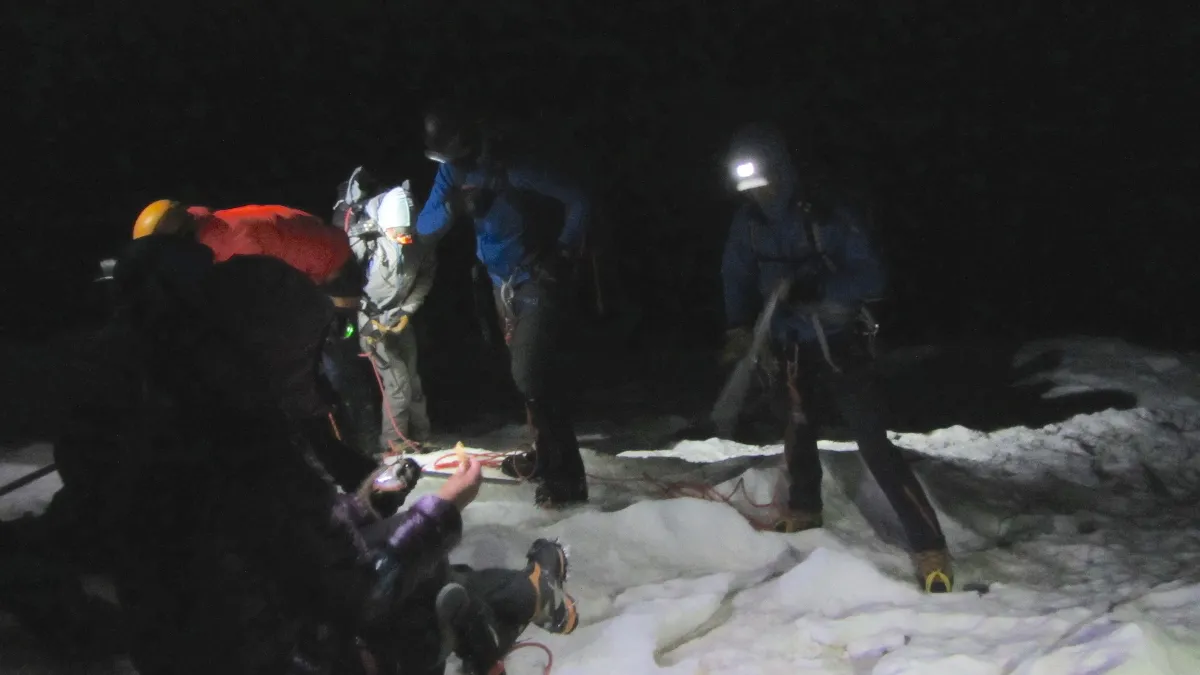
Focus
In the real-world, we don’t have the same types of physical dangers, but we do have lots of other mental distractions. Some of these distractions come in the form of doubt or worry and others more digital like mobile apps and social media.
When climbing the mountain, keeping focus on your steps, almost in a sort of meditative way, helps your mind from wandering. Only during planned breaks can you really stop and take in the experience around you.
The same can apply back on the ground. It can be more effective to proactively plan out specific times for handling distractions. That way, when you are working, you can focus better at the task at hand without worry about a distraction or other task taking over.
Make Intelligent Choices Along the Way
Mountains are constantly changing. Even with guides (who climb every day), a path that worked the week or even the day before may not even exist the day you are climbing.
We experienced this several times when the path in front of us suddenly disappeared into a bottomless crevasse.
Many times a new, difficult maneuver presented itself to our team.
Guides were always looking ahead
Notice the guide, with the orange helmet, second from the left? While the team was working hard and enjoying the experience, the guides were ALWAYS planning ahead.
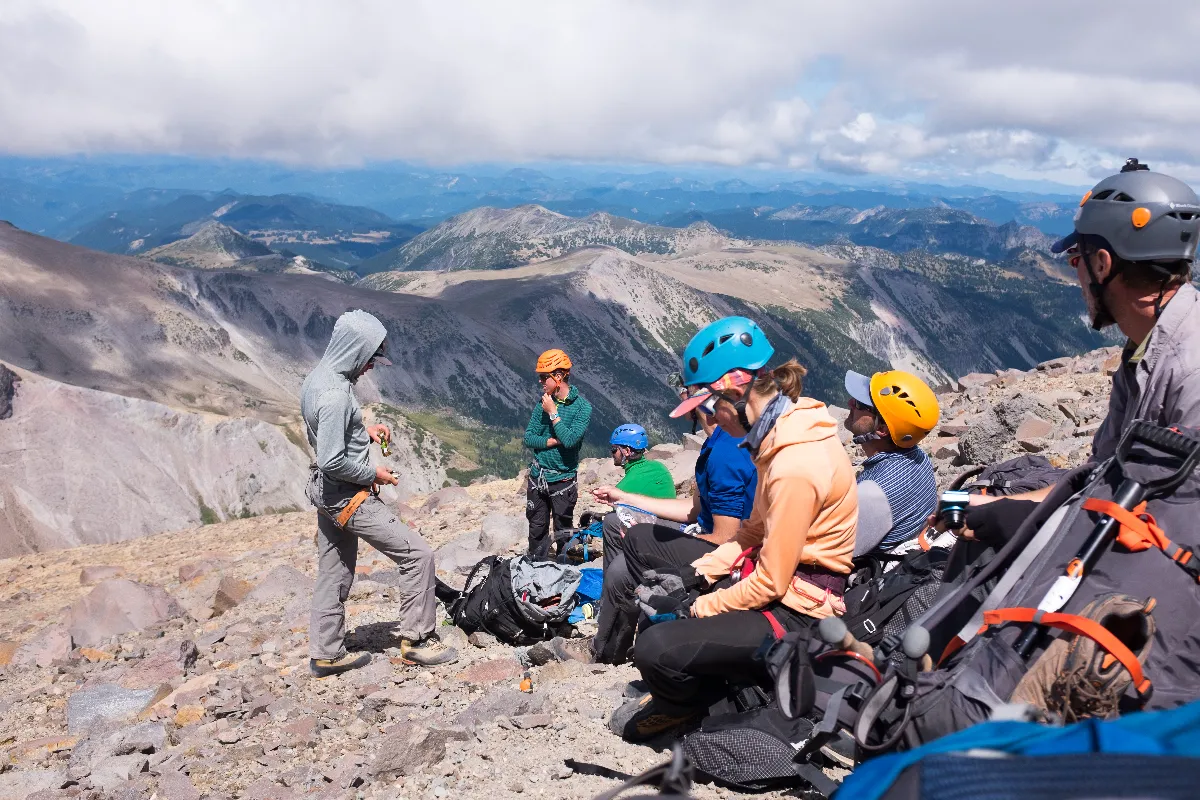
Planning ahead through difficult times
In the image below, one of the team members is about to make a difficult maneuver. You can also see that an anchor has been placed by a guide as a preventative measure. The team is roped together and everyone has been briefed on the plan, risks, contingency plans, etc.
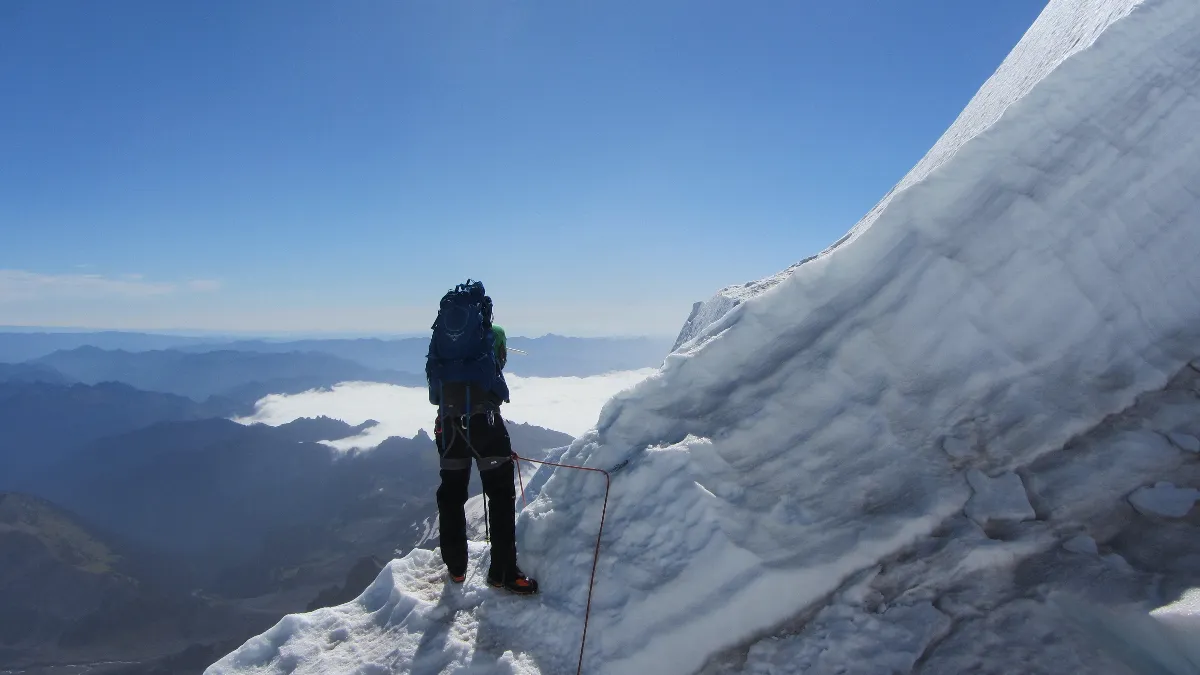
It’s important to take the time to slow down and make sure everyone is making the right strategic moves.The constant re-routes added to the exhaustion, but it was part of the journey.
Sometimes it’s necessary to slow down to go faster. Or at least, safer.
The key is to work as a team to make sure individuals minimize mistakes - and everyone succeeds together.
Celebrate Milestones
Celebrating accomplishments not only feels good but it helps wire the brain to repeat those tasks.
Celebrate Small Milestones
While climbing, I didn’t have much time to pause and enjoy the scenery around me; you are pretty much looking at your feet for 14 hours straight.
But the scenery is half of the reason for being there! During my breaks, I made sure to stop and really appreciate where I was.
It was also an appreciation that so few people would ever get this opportunity. As beautiful and difficult as it was.
I wasn’t going to let myself or others down by not enjoying it.

Stopping for a moment along the way also gave me the ability to look back on the path behind me. This gave me a sense of accomplishment and additional motivation to push for the next hour.

This is incredibly important of teams and people with person goals. A recovering addict will tell you: every day is a struggle. But, every day is also an accomplishment. Making sure to be aware of these small accomplishments can give you the push to make it through the next hour climb.
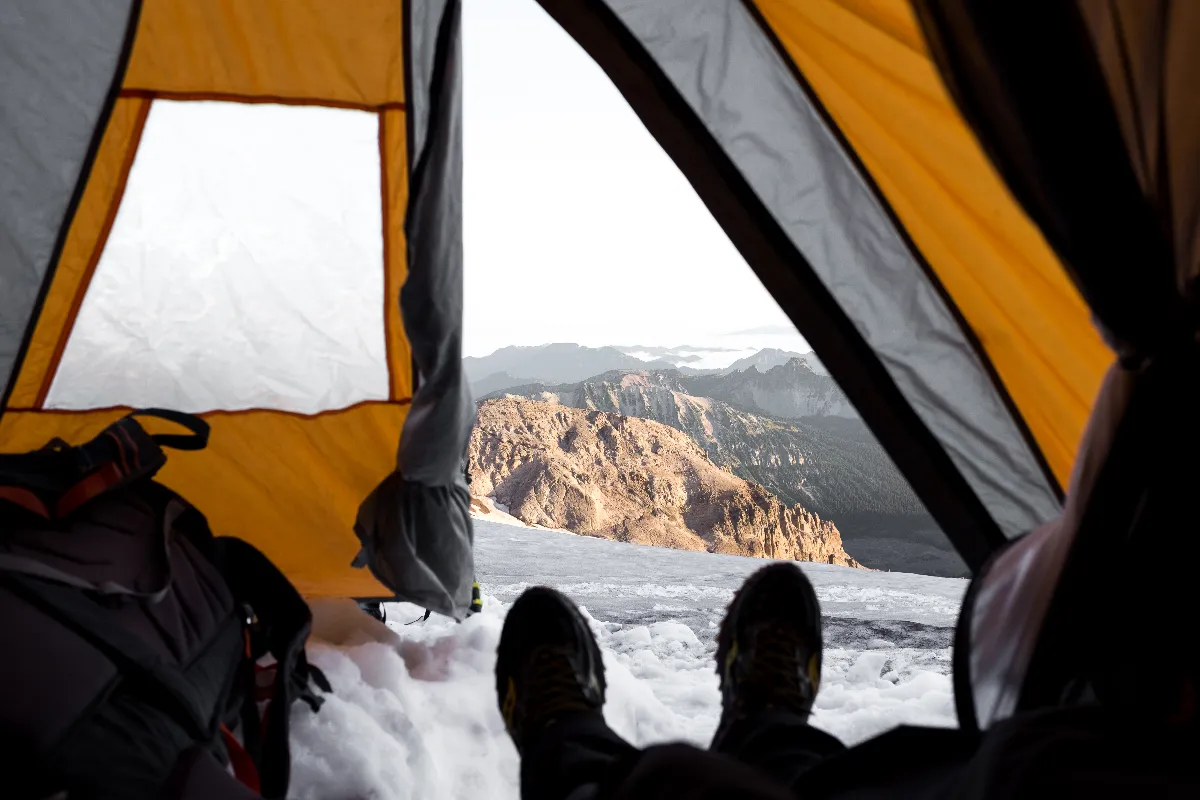
Celebrate Big Milestones
Of course, the reason you set out to climb a mountain is to reach the top (and back down safely).
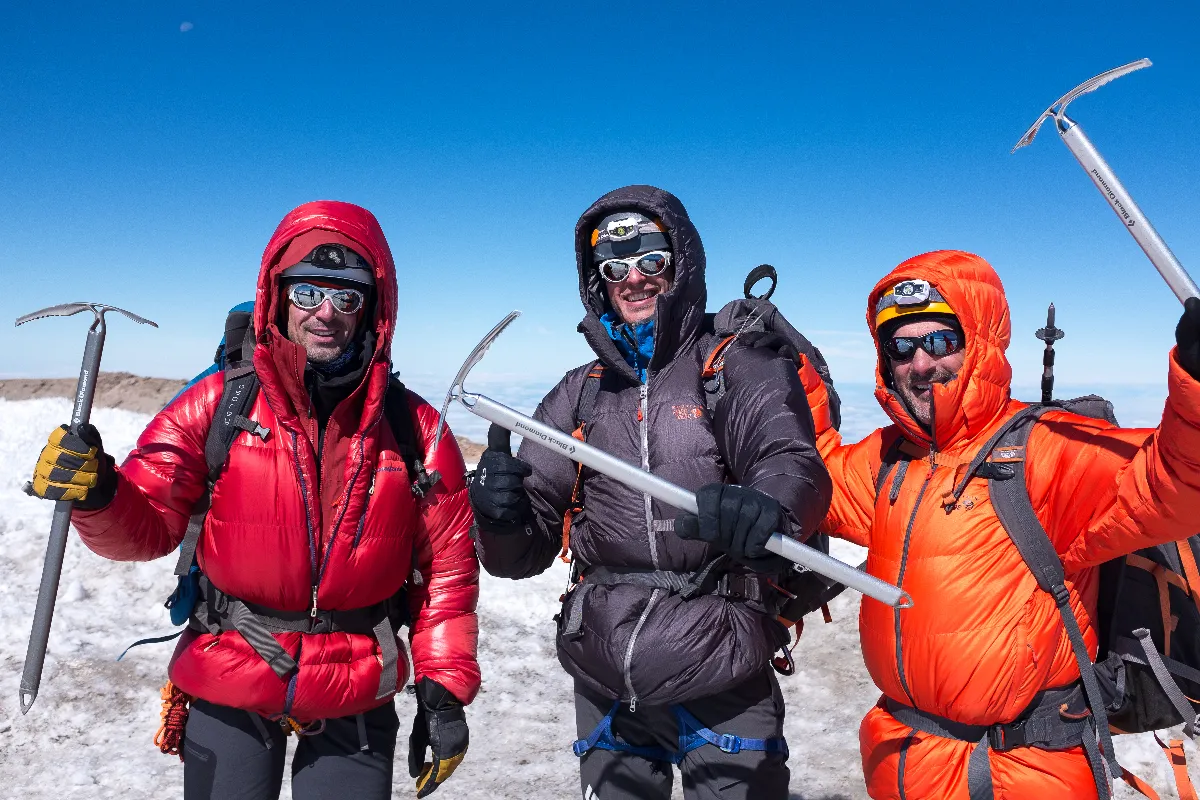
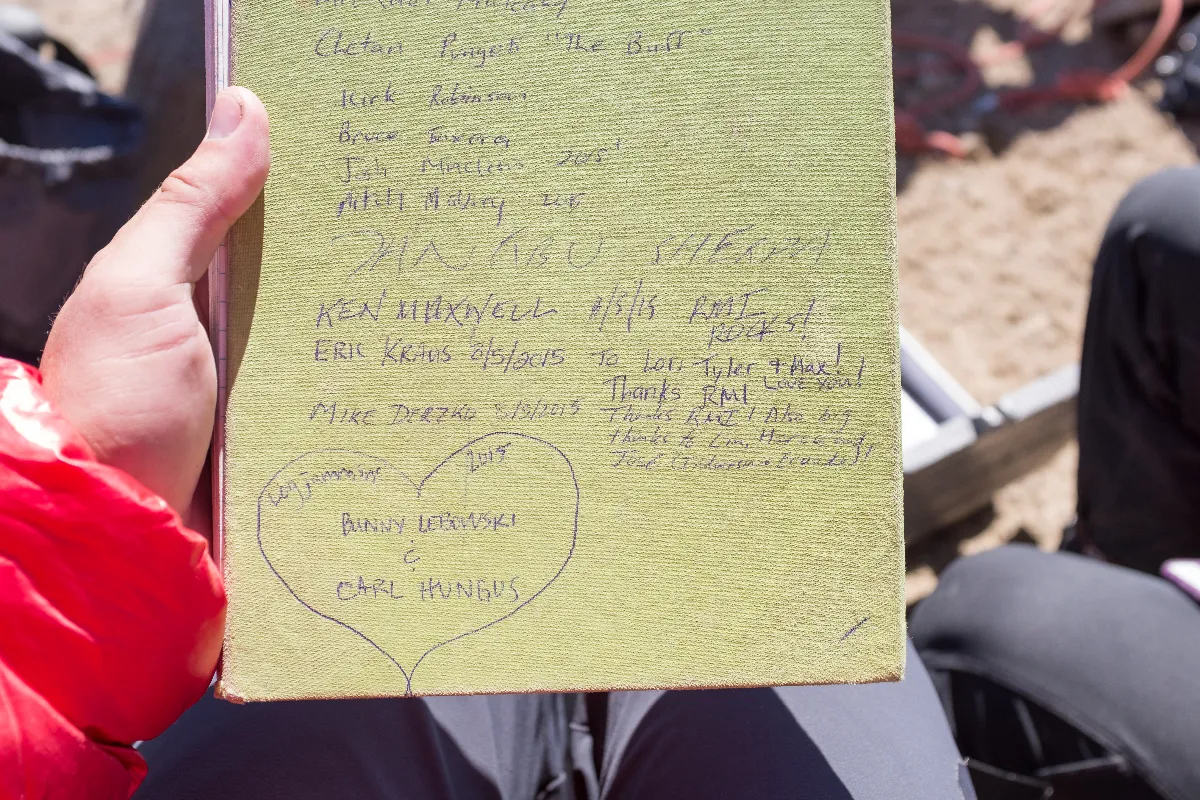
It’s important to take the time to pause and reflect on the accomplishment you just made. Reflecting gives you the ability to appreciate the hard work and learn from any mistakes you may have made along the way.
It also gives you the ability to share your experience with others.
Conclusion
Rainier was an awesome place. I met some great people and learned a lot about myself, hard work, and commitment.
It opened my eyes to a new way to looking at goal setting and goal execution. For that, I thank the mountain for allowing me to be there that week.
I wish you the best of luck on climbing your next mountain.

